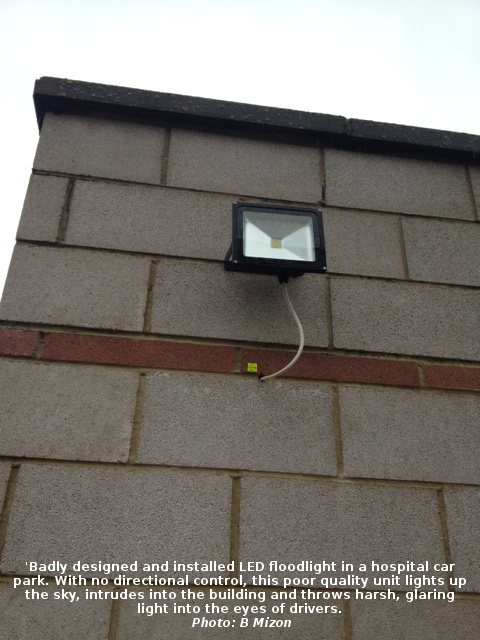Blue-rich LED Lighting — Bright New Future?

Artificial lighting is undergoing a radical worldwide change toward high intensity LEDs. These appear to have many advantages: cheap, energy-efficient and easily controlled; but novelties in the environment often have hidden costs. Do potential risks to health, wildlife and the enjoyment of the stars caused by the blue-rich white types of LED lighting justify the rewards?
Atmospheric light scattering makes the sky blue in daytime but causes sky glow from artificial light at night. Violet-blue light (390 nm) scatters 16 times more than warmer red light (780 nm). Many LEDs produce harsh, often over-bright blue-white light, scattering high into the atmosphere. This can cause more sky-glow than previous warm orange (low colour-temperature) lights: the benefits of otherwise good downward direction of light may be negated by blue-richness, over-brightness and glare. The result will be the veiling of the night sky, as excessive light from road lamps reflects upwards; or emissions from private lighting, much of which has no directional light control, go directly into the environment and the sky from poorly designed lamps.
Other important negative effects of blue-rich light include:
- Sleep disorders in humans and suppression of melatonin, a hormone vital to our well-being. The American Medical Association is deeply concerned and has issued guidance notes on colour, intensity and usage for the lighting industry. How many of the new installations comply to these recommendations?
- Disruption of habitats and behaviours of wildlife, which has evolved in the context of a day-night cycle, and cannot function properly if night becomes day.
- Security issues – the dazzling glare from poorly aimed ‘Rottweiler’ LED lamps provides a screen behind which criminal activity can go on unseen. These are anti-lights, concealing rather than revealing. Lights in secluded places are courtesy lights for burglars.

The precautionary principle
UNESCO's Earth Charter states that the prevention of harm before it happens is the best method of environmental protection. When knowledge is limited, apply a precautionary approach:
a. Take action to avoid the possibility of serious or irreversible environmental harm even when scientific knowledge is incomplete or inconclusive.
b. Place the burden of proof on those who argue that a proposed activity will not cause significant harm, and make the responsible parties liable for environmental harm.
The worldwide introduction of blue-rich LED lighting has involved almost:
- No environmental impact assessments
- No definitive studies on human health
- No democratic sanctions, investigation or review of likely effects
- No widely accepted policies or standards on beneficial luminaire design or installation
- No concern for its effect upon an already seriously degraded night sky
Had humanity allowed the introduction of agents, such as new gasses or chemicals, into the environment without applying precautions, then there would be outcry. Who will pay if it turns out that people suffer and many of the new lights need to be replaced?
The Commission for Dark Skies calls for:
- No more blue-rich white and/or over-bright lighting installations until proven safe for humans and wildlife and adapted so as not to increase skyglow
- More scientific research on the effects of artificial light at night, including independent environmental and health impact studies
- Revisions in lighting codes and standards to ensure that new technology works for living things and for the terrestrial and celestial environments, and not against them
- Obligatory use of star-quality, ‘warmer’ and glare-free lighting on roads and for domestic and commercial applications. Warm colour LEDs are available — why not use them?

